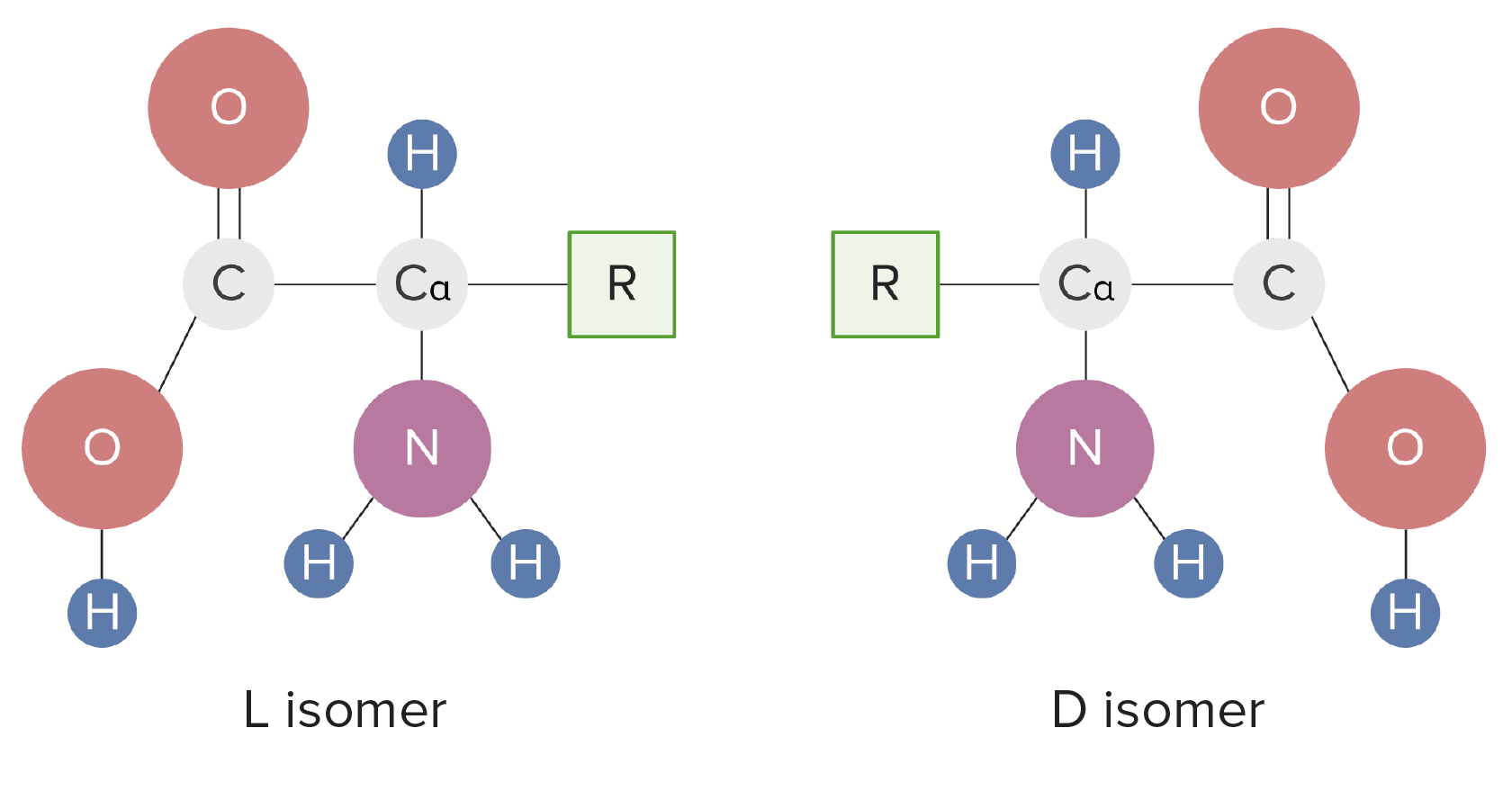Playlist
Show Playlist
Hide Playlist
Peptide Bonds – Peptides
-
03 Basic Peptides.pdf
-
Reference List Biochemistry.pdf
-
Download Lecture Overview
00:01 In this presentation, we'll start to make the connection between the structures of individual amino acids and the properties of the proteins that contain those amino acids. 00:10 I’m gonna focus of four areas of protein structure in this presentation. 00:15 These four areas of protein structure, include what are called primary or close interactions between amino acids that are immediately adjacent to each other. 00:24 Secondary structure which arise from interactions between amino acids that are not immediately adjacent to each other but that are close. 00:32 Tertiary structures that rise in proteins as a result of interaction between amino acids that are far apart in primary sequence and finally quaternary structure which arises with the interactions between separate protein units. 00:47 Now, we remember that the basic structure of amino acids that’s shown on the left. 00:54 On the right, I've shown a schematic representation of one of types of protein structure that exists commonly. 01:01 This structure is known as the Alpha Helix and was one of the structures discovered by Linus Pauling in from which he won the Nobel Prize. Now, in order for protein to be formed, individual amino acids building blocks have to be joined together. 01:17 The joining together of those building blocks is happens as result of the formation of peptide bonds. 01:23 To make peptide bond, the Alpha carboxyl of one amino acid is joined to the Alpha amino of the adjacent amino acid. 01:30 This process occurs in ribosomes and in the process of this happening, a water molecule is split out as you can see. 01:38 Now the peptide bond, shown here in green is the link between the two individual amino acids. 01:45 The peptide bond has been formed which is shown in the center of this figure has some interesting chemistry associated with it. 01:53 The interesting chemistry is that of resonance. 01:56 The double bonded oxygen on the carbon can re-shuffle it's electrons as shown and move the molecules, shown on the right. 02:04 The molecule on the right now, shows the peptide bond, not as a single bond but rather as a double and if you remember from organic chemistry, double bonds have the property that they cannot rotate whereas a single bonds can rotate. 02:18 Further, double bonds have different orientations than single bonds do, having the arrangement of atoms around them in cis and trans configurations. 02:28 You can notice in this structure that shown on the screen that the alpha carbons which are the two carbons on either side of the peptide bond are arranged in a trans-configuration. 02:39 Another way of viewing the trans-nature of the peptide bond that describe in the earlier slide is this one right here. 02:47 If we look at this the peptide bond again is shown in green. 02:51 On the left, we see the alpha carbons arranged in a transposition around the double bond, a peptide bond. 02:58 On the right we see the same two alpha carbons, how they would exist if they were arranged in the cis-configuration. 03:04 You'll noticed that the R groups which are attached to the individual alpha carbons become close together and what actually interact in an unfavorable fashion if the alpha carbons were in the cis-configuration.
About the Lecture
The lecture Peptide Bonds – Peptides by Kevin Ahern, PhD is from the course Biochemistry: Basics.
Included Quiz Questions
Which of the following areas of protein structure involves the interactions between separate protein chains?
- Quaternary
- Primary
- Secondary
- Tertiary
- Quinary
Customer reviews
5,0 of 5 stars
| 5 Stars |
|
1 |
| 4 Stars |
|
0 |
| 3 Stars |
|
0 |
| 2 Stars |
|
0 |
| 1 Star |
|
0 |
The courses are very concisely presented, it is really useful for preping for an exam





